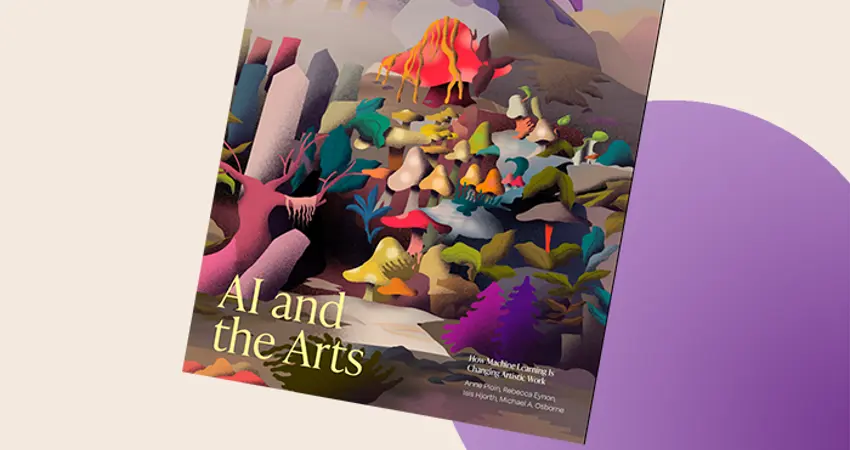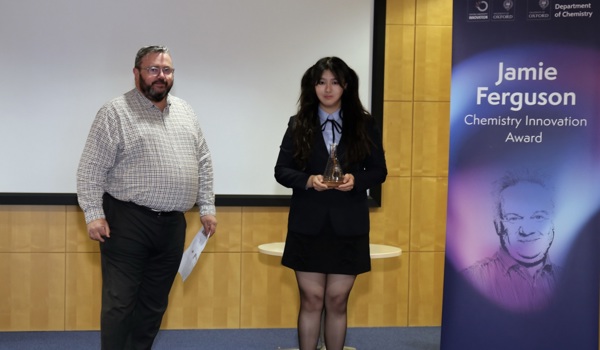09 Mar 2022
New report into the intersection of AI and the arts
Collaboration between the University of Oxford's Department of Engineering Science and the Oxford Internet Institute looks into the possibility of AI transforming art

Recent advances in artificial intelligence (AI) have caused an explosion of interest in “creative AI”. While we know AI technology is changing many areas of work, its potential impact on creative tasks and creative work remains to be established.
A new report, ‘AI and the Arts: How Machine Learning is Changing Artistic Work’, looks into this area. It is co-authored by Anne Ploin, Professor Rebecca Eynon and Dr Isis Hjorth of the Oxford Internet Institute (OII), and Professor Michael A. Osborne, from the Department of Engineering Science and Oxford Martin School, University of Oxford.
The report also showcases a range of artworks from contemporary artists who use AI as part of their practice and who participated in our study.
Researcher Anne Ploin from the OII shares the findings from the report.
Setting the scene: AI and the Creative Arts
Through a case study of the use of current machine learning (ML) techniques in artistic work, we investigate the scope of AI-enhanced creativity and whether human/algorithm synergies may help unlock human creative potential. In doing so, the report breaks down the uncertainty surrounding the application of AI in the creative arts into three key questions.
- How does using generative algorithms alter the creative processes and embodied experiences of artists?
- How do artists sense and reflect upon the relationship between human and machine creative intelligence?
- What is the nature of human/algorithmic creative complementarity?
Methodology
We identified the many communities working at the intersection of AI research and the art world, focusing on media and fine artists who use ML as part of their practice. We interviewed fourteen experts working in the creative arts, comprising media and fine artists whose work centred around generative ML techniques, as well as curators and researchers in this field. By exploring artists’ engagement with ML technology, we developed a fuller understanding of the spectrum of implications of AI – ranging from automation to complementarity – in a domain at the heart of human experience: creativity.
Key findings
In the emerging space of “ML art”, we found that artists self-identified in a range of ways that did not always centre AI technology – although technical competence is a highly valued skill. We found that new activities required by using ML models involved both continuity with previous creative processes and rupture from past practices. Major changes concerned the reorganisation of creative workflows around the generative process, the evolving ways ML outputs were conceptualised, and artists’ embodied experiences of their practice.
Furthermore, artists found many similarities between contemporary ML art and other periods in art history: for instance, the code-based and computer arts of the 1960s and 1970s and the harnessing of randomness by much experimental art. Many also found the generative capabilities of ML models to be a “step change” departure from past tools.
We also found that artists highlighted a difference in scope between human and machine creativity. While ML models could help produce surprising variations of existing images, practitioners felt that the artist remained irreplaceable in giving these images artistic context and intention – that is, in making artworks. They highlighted that the creativity involved in artmaking was about making creative choices, a practice which remained beyond the capabilities of current ML technology.
Ultimately, most agreed that despite the increased affordances of ML technologies, the relationship between artists and their media remained essentially unchanged, as artists ultimately work to address human – rather than technical – questions.
The future of AI and the Creative Arts
We concluded that human/ML complementarity in the arts is a rich and ongoing process, with contemporary artists continuously exploring and expanding technological capabilities to make artworks. Although ML-based processes raise challenges around skills, a common language, resources, and inclusion, what is clear is that the future of ML arts will belong to those with both technical and artistic skills. There is more to come.
Further information
Ploin, A., Eynon, R., Hjorth I. & Osborne, M.A. (2022). AI and the Arts: How Machine Learning is Changing Artistic Work. Report from the Creative Algorithmic Intelligence Research Project. Oxford Internet Institute, University of Oxford, UK.
This report accounts for the findings of the “Creative Algorithmic Intelligence: Capabilities and Complementarity” project, which ran between 2019 and 2021 as a collaboration between the University of Oxford’s Department of Engineering and Oxford Internet Institute.
The report also showcases a range of artworks from contemporary artists who use AI as part of their practice and who participated in our study: Robbie Barrat, Nicolas Boillot, Sofia Crespo, Jake Elwes, Lauren Lee McCarthy, Sarah Meyohas, Anna Ridler, Helena Sarin, and David Young.
This article is reproduced with kind permission from the Oxford Internet Institute. The original article can be found here, authored by Anne Ploin.





